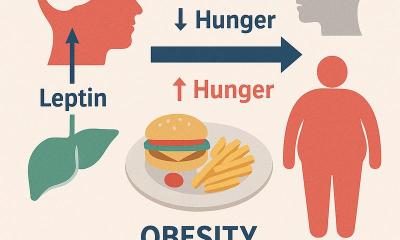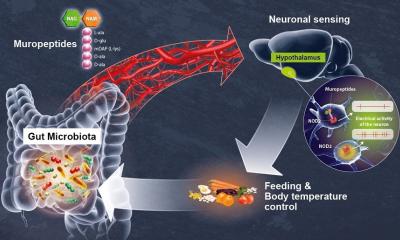Two sides of the coin
Interactions between non-alcoholic fatty liver disease and diabetesReport: Karoline Laarmann
Too much unhealthy food, too little exercise – the risk factors for the development of non-alcoholic fatty liver disease and Type 2 diabetes are not only similar but also form a life-threatening alliance.

Dr Jörg Bojunga, Head of Endocrinology and Diabetology at the Johann Wolfgang-Goethe-University, Frankfurt am Main, Germany, presented new scientific findings on the causes and effects of both diseases at this year’s annual German Congress on Internal Medicine.
‘For a long time, fatty liver disease was considered a kind of “trivial offence” without any impact on health. However, we now know that in 30% of cases fatty liver disease can lead to severe secondary diseases, such as fatty liver inflammation, cirrhosis of the liver, liver failure or liver cancer, and therefore shortened life expectancy,’ Dr Bojunga explained, during an interview with Karoline Laarmann. Around 60% of diabetics develop fatty liver in the course of their disease, with fatty liver being defined by visceral fat levels over 5%. Insulin resistance means that fat is stored in the liver and also that the liver itself produces additional fat.
However, despite long-held views, there is also a reverse development of the disease, he added. ‘At least in some patients fatty liver develops first and then, through the release of inflammatory mediators such as the protein Fetuin-A, also leads to the insulin sensitivity being lowered. We may have found an indicator here, which might enable us to predict the risk of diabetes and its complications.’
As fatty liver in itself does not generate any symptoms it is mostly diagnosed by chance during an abdominal ultrasound (enlarged liver) or a blood test (elevated liver count). Should the diagnosis be confirmed, long-term treatment should commence. This should include at least 20 minutes of daily exercise and a weight loss of about 7-10%.
Diabetes and fatty liver are mostly manifestations of the same problem, i.e. metabolic syndrome, which is why, in very obese patients, even slight weight loss has clear, positive effects on the fat distribution in the liver.
However, Dr Bojunga said: ‘Fast weight loss through crash dieting should definitely be avoided. In fact, this can actually make fatty liver disease even worse. Moreover, patients then mostly find it even more difficult to keep their weight down in the long run. Many patients have been living an unhealthy lifestyle for several decades. This makes it difficult to achieve changes with draconian recommendations. Nutrition counselling and care are therefore also extremely complex and one has to invest a lot to lead a relatively small proportion of patients to long-term success.’
In future, due to these difficult treatment conditions, experts will be reinforcing the importance of prevention. Children should be taught about the importance of healthy food even in nurseries and primary schools, a concept also supported by Dr Bojunga.
It is not only the lack of basic knowledge, but also a lack of critical awareness when it comes to the advertising promises of the food industry: ‘Many food labels such as “low in fat” or “diet” are misleading because the products may contain less fat, but actually large amounts of fructose, which can also lead to liver damage. Thanks to new EU legislation, however, it will become more difficult for the industry to cheat with labelling products as to their nutritional and health-related values.’
Furthermore, new findings have shown that in rare cases genetic changes may also be causes for fatty liver disease. This means that even slim individuals can be affected. Early diagnosis is also of great importance here to start the necessary treatment and avoid further complications – that is, if there is actually a risk, because, he said, ‘Fatty liver disease is an increase of fat in the liver, which goes hand in hand with an inflammation and can lead to an increase of connective tissue, i.e. liver fibrosis.
‘However, we are not yet medically able to determine exactly which patient with fatty liver inflammation is likely to develop progressive liver diseases. This is why the level of inflammation and increase of connective tissue play an important part in diagnosis as well as research.’
There is now less need for needle biopsies of the liver for this examination. Non-invasive tests, such as blood, and ultrasound-based procedures to measure the connective tissue ratio of the liver such as the FibroScan, are already delivering good, quick results on risk factors and the progression of liver disease.
20.06.2011











